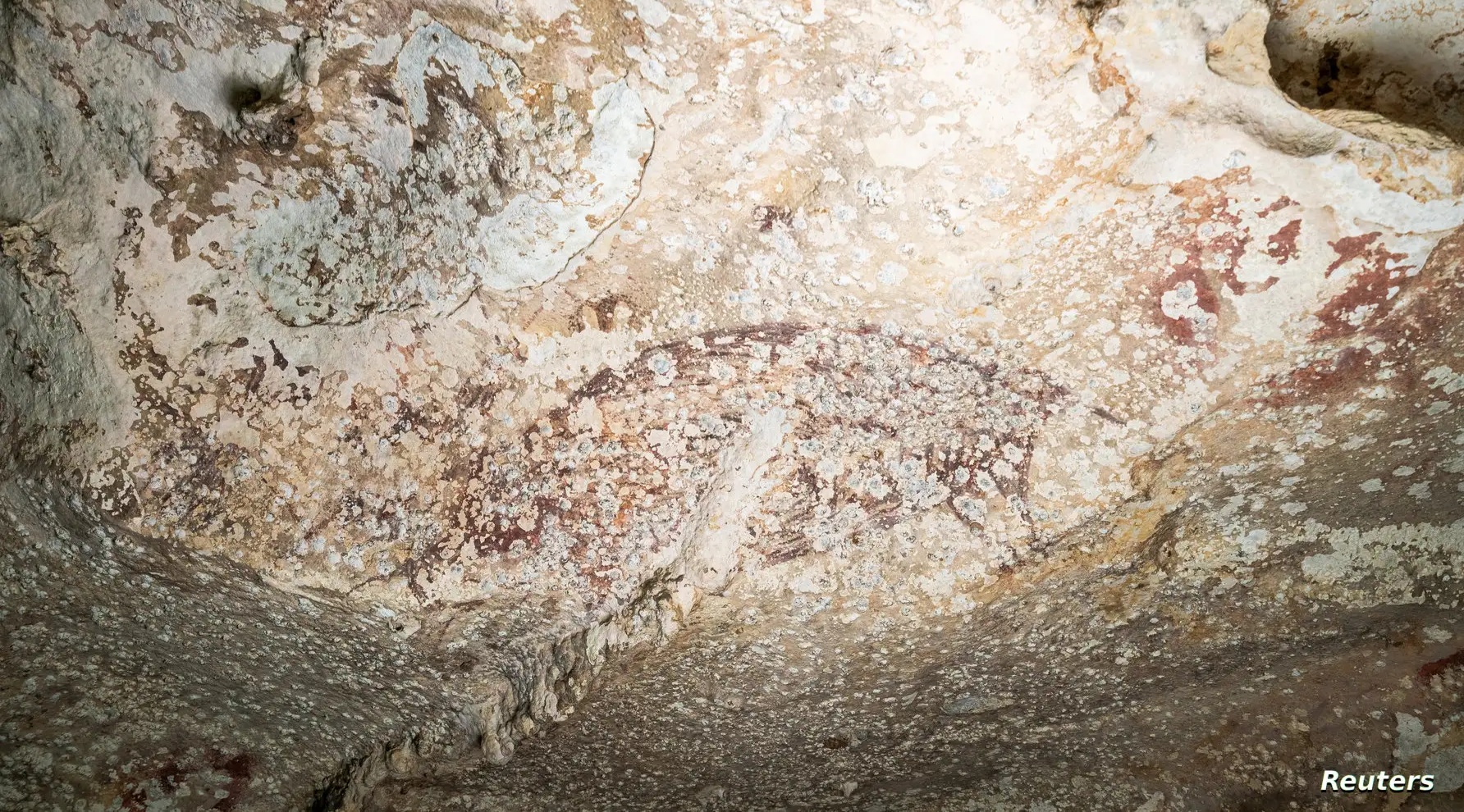
News Agencies
According to the British newspaper The Telegraph, the artwork, discovered in a limestone cave on the island of Sulawesi, is believed to be the oldest human artwork in the world. While Neanderthals are known for their own cave art, which predates that of Homo sapiens, the Sulawesi painting stands out for its complexity, surpassing the simple, static images created by our hominid cousins.
Scientists believe the scene, featuring the pig and three stick-figure humans, represents the "earliest known surviving evidence for imaginative storytelling." A new analytical technique, developed by researchers from Griffith University and Southern Cross University in Australia, allowed them to analyze the age of calcium carbonate deposits formed over the artwork. This technique revealed the artwork to be over 51,000 years old, over 4,000 years older than previously thought.
The researchers believe the artwork could be even older, and that the new uranium-based dating technique could "revolutionize rock art dating."
"Humans have probably been telling stories for much longer than 51,200 years, but as words do not fossilize, we can only go by indirect proxies like depictions of scenes in art - and the Sulawesi art is now the oldest such evidence by far that is known to archaeology," said lead author Dr. Adhi Agus Oktaviana.
While the exact story remains unknown, the researchers believe the characters in the artwork form a larger narrative. A previous study by the same team found the oldest evidence of a hunting sequence in rock art, also in Sulawesi, dating back around 44,000 years and depicting pigs being hunted. The newly analyzed artwork is older than this, but it is unclear if it depicts a hunting scene.
"Our discovery suggests that storytelling was a much older part of human history, and the history of art in particular, than previously thought," said co-author Professor Adam Brumm. "It is clear that the original artist wanted to create a narrative with the images. We can see that a story is going on here. We have now dated this scene to 51,200 years ago, making it the oldest known narrative depiction in the world. We don’t know what the stories were about, but we know there were stories taking place."
The scientists wrote in their paper, published in the journal Nature, that "our findings show that figurative portrayals of anthropomorphic figures and animals have a deeper origin in the history of modern human (Homo sapiens) image-making than recognized to date, as does their representation in composed scenes."
This discovery sheds new light on the origins of human storytelling and artistic expression, pushing back the timeline of these fundamental aspects of our cultural development.





